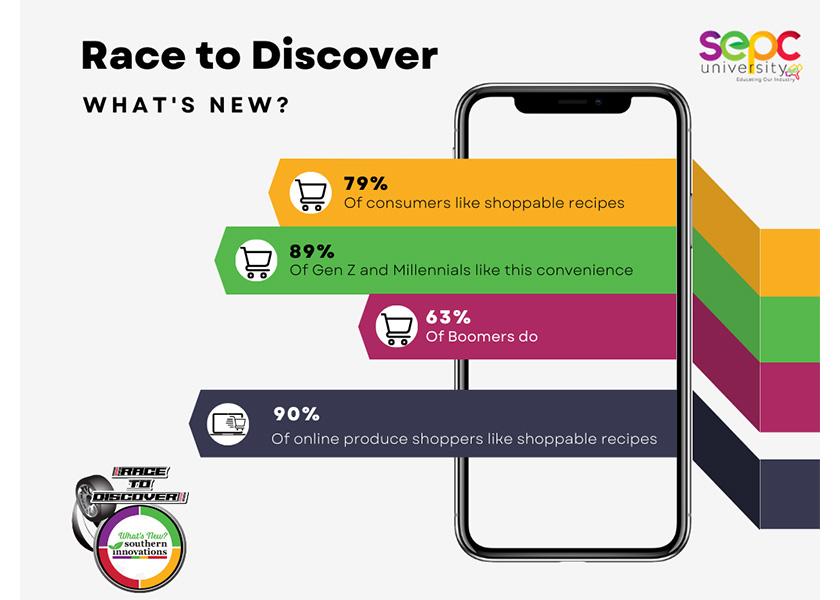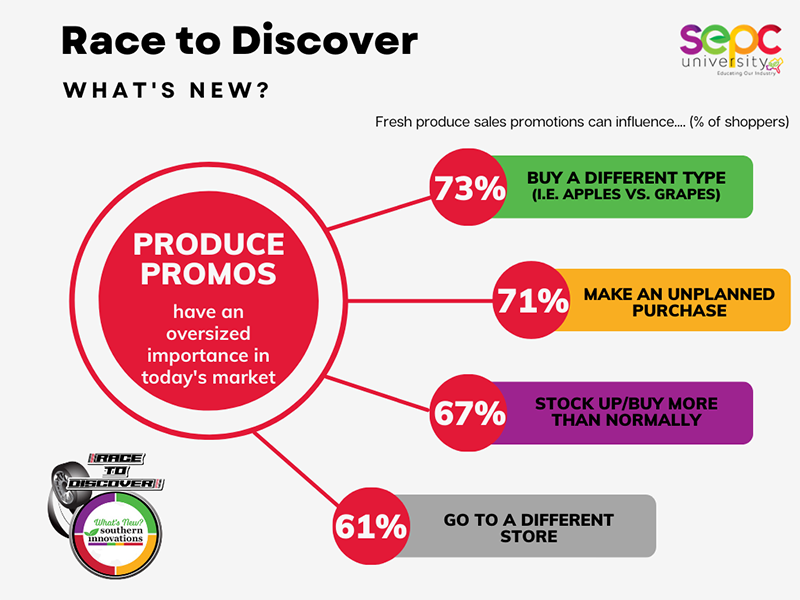SEPC research study sheds light on the fresh produce consumer

The Southeast Produce Council unveiled its annual "What’s New? 2023" consumer research at a sold-out educational session at its Southern Innovations conference in Charlotte, N.C., according to a news release.
“Only one-third of consumers tend to consume fresh produce every day,” David Sherrod, SEPC president and CEO, said in the release. “Additionally, 51% readily admit that they find it hard to reach the recommended daily amount of fruit and vegetables or are unsure what that amount even is. That means current consumption patterns leave ample room for growth for fresh, while recognizing the tough economic marketplace.”
Related news: Food expenditures up nearly 13% in 2022, report says
Here are key takeaways in fresh produce trends, according to the consumer research report.
Maximizing value is a balancing act
“Consumers are engaged in a constant balancing act, switching dollars between foodservice and retail as well as between produce types, channels and amounts purchased,” Sherrod said. “The ultimate value equation is far more than the lowest price alone. No less than 86% recognize that they will splurge a little for the right reasons, topped by doing something nice for themselves or friends/family.”
-
When eating out at restaurants, the focus is on the main entrée or choosing a restaurant that fits the budget. Fifty-four percent of consumers occasionally or frequently add store-bought produce to restaurant takeout or delivery.
-
Fresh produce promotions can steer consumers to a different type of produce (73%), make an unplanned purchase (71%) or visit a different store (61%).
-
Sixty-two percent of consumers believe personalized sales promotions to be a good or great idea, while only 31% are enthusiastic about dynamic pricing when buying fresh fruit and/or vegetables.

Produce maintains its health halo
“In the eye of the consumer, fresh produce has always been synonymous with health and nutrition,” Sherrod said.
-
Two-thirds of consumers place some or a lot of focus on making healthy food and beverage choices.
-
Seventy-six percent of consumers buy produce items specifically for their known health benefits.
-
At the same time, 83% of consumers believe that veggie pasta, meat or supplements can help people reach their recommended daily amount of fruit and vegetables.
Connecting the dots between health, planet and people
“Consumers connect the dots between health, planet and people,” Sherrod said. “While economic pressure has created many competing choices, there remains willingness to spend a little more for items that are grown more sustainably, reduce package or food waste or highlight solutions for people in the supply chain or community.”
-
Eighty-three percent of consumers believe grocery stores and restaurants should aim to reduce single-use plastic.
-
Half of consumers believe it is very important for grocery stores and restaurants to widen access to fresh produce to underserved communities and company employees.
-
Eighty-two percent are interested in knowing more about the who, where and how of store-bought produce, with a key communication role for the package label and websites.
-
One in five consumers struggle with fresh produce waste at home.
Convenience remains top of mind
“Life is hectic and expensive at the same time that many Americans try to find a better work/life balance. This has led to inconsistent shopping behaviors that reflect cooking from scratch to save and ultra-convenience all at once,” Sherrod said. “As such, retail and restaurant visits and meals are about time-well-saved as much as about time-well-spent.”
-
Interest in value-added solutions is down a little compared to last year. This is also reflected in Circana value-added sales, which dropped 5% year over year. However, value-added remains a big opportunity at $11 billion in annual sales, according to Circana.
-
Consumers say they would purchase more value-added with a smaller price differential and better shelf life.
-
Consumers are also finding convenience in smoothies, squeeze pouches, shots and supplements, especially younger generations — demonstrating that the competition is far wider than frozen and canned alone.
Technology is a go-to tool
“Technology has made great inroads in farming, retailing and foodservice. But for consumers, technology often reflects a great paradox,” Sherrod said. “Consumers welcome technology in many parts of their lives yet have many questions about others, such as innovations that improve taste, nutrition or sustainability aspects of fresh fruit and vegetables.”
-
Routine meals are making a comeback, but digital remains a big source of meal inspiration and tips, led by recipe websites, used by a reported 39% of consumers, YouTube (28%), Facebook (26%) and other big social media platforms.
-
Seventy-nine percent of consumers are interested in shoppable recipes, but the number of households buying online has plateaued.
-
Consumers see many good uses for QR codes, led by nutrition information, recipes, storage tips, brand and sourcing information, but usage remains relatively low, with 50% using QR codes rarely or never.
The online study among 1,887 consumers was conducted and presented by 210 Analytics and fielded in August 2023. A complete copy of the findings can be requested by contacting SEPC.







